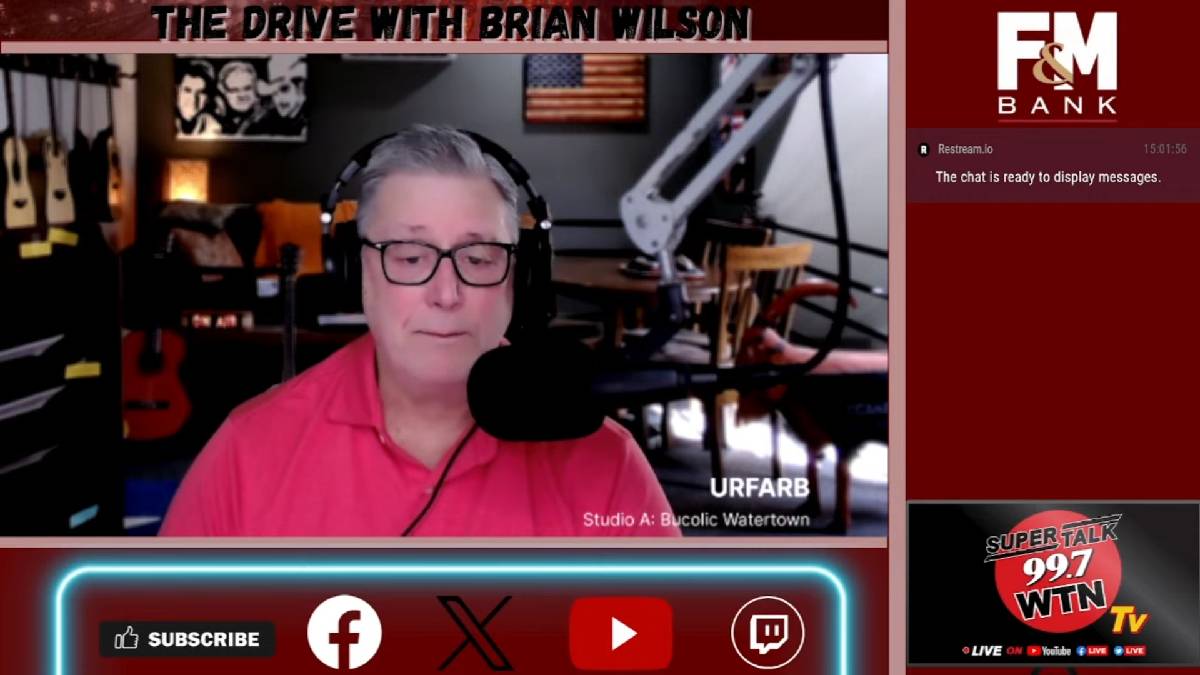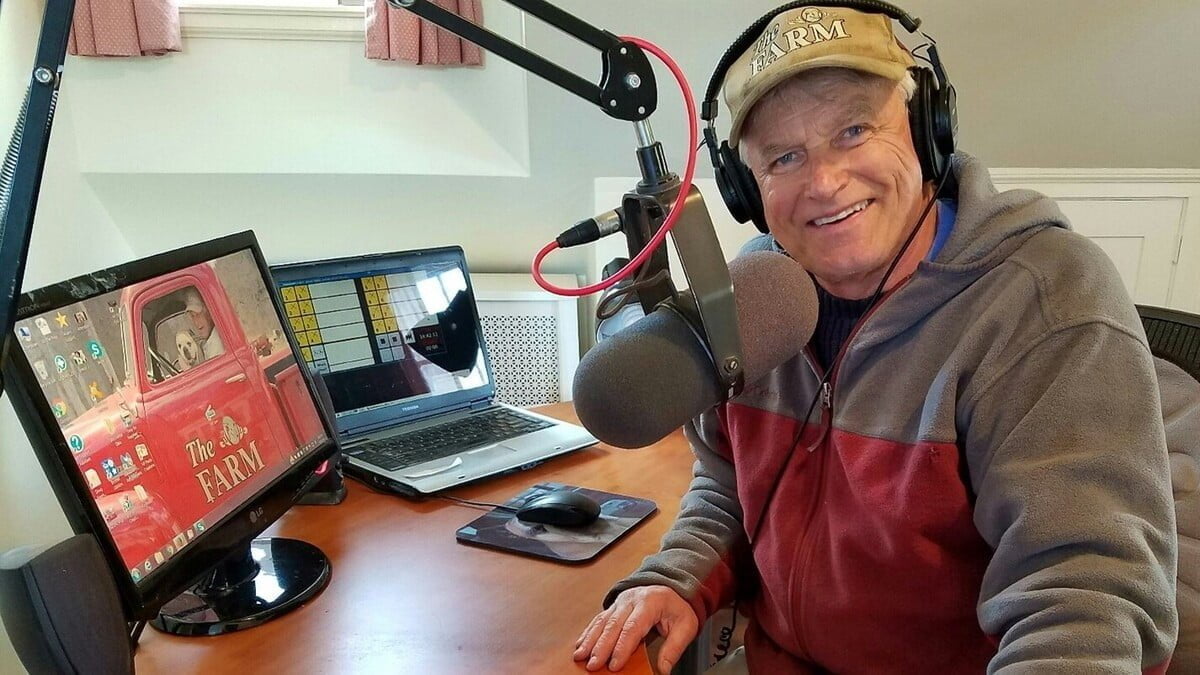Sometimes you just have to let art flow over you. I mean that as opposed to choosing to be constantly analytical and forever asking “why?” In today’s case, I’m referring to something that a lot of news and news/talk radio stations do with their websites and have been doing for quite some time.
I’m talking about the practice of video streaming the news anchors, reporters, and talk hosts so the audience can watch them in the air studio as they do their newscasts or shows. Basically, what you’re seeing in these instances is a single stationary camera focused on an individual who’s likely reading off a monitor and pushing a couple of keys or buttons to fire sound or open up the mic for the traffic and maybe weather.
If the station is a little fancier, it might even offer a camera that pans, multiple images showing a wide or overhead view of the studio, or a split screen option if there are two hosts or perhaps a guest. The fun part is that everyone is pretty much wearing headphones and not looking at each other because they are face-planted in their screens.
Riveting.
I do remember that 15 or 20 years ago this was a relatively new benefit, certainly a novelty of sorts for radio devotees. But it has become a novelty whose time has pretty much passed. Much has changed in the last generation and the mystery of what our radio news and talk people look like is no longer a mystery. Social media and more robust websites have seen to that and that’s a good thing.
“Oh, that’s what they look like.”
Along those lines, social media and added visual elements have killed off a great deal of the radio star’s mystique.
So, the way I see it, a conclusion can be drawn from all this:
Radio with pictures doesn’t always work.
To be more accurate, radio with pictures is television and we already have that, and I hear that for the most part it’s going reasonably well. Radio stations keep trying to push followers to their websites for a variety of reasons like advertising or tracking the audience numbers so you can charge more money for advertising or squeezing column space and station promotion elements down on the page so you can make more room for…advertising.
So, we know that much but there are other components here, too.
Radio is much more about the individual and the imagination. We all hear the same words and sounds in a newscast or a talk program but our minds our very much our own and the mental images and thoughts we conjure are like no one else’s.
Even while we are driving, (as the majority of all radio listeners are) we are formulating those exclusive patterns and illustrations in our brains as we take in the audio.
(No, I’m not Bill Nye the Science Guy but I do read plus I own a bow tie and my own lab coat complete with pocket protector.)
The imagination is there for a purpose, and it seems to take a coffee break if you take the extra steps to “watch” morning news radio or talk-opinion shows online via the station website.
There is a lot lost by just sitting there staring at people in front of their monitors, headphones on, the reflection of their screens glaring off their glasses.
Most people can just go to work and see that.
While audio plays or the network goes up at the top of the hour, we’re often treated to a home screen complete with the station logo, the daily show lineup, and of course, some advertising.
Why not just listen?
Radio is about sound and making clever use of that sound to boot. With these sluggish video images, you’re shooting yourself in the foot by diverting the audience’s attention away from your main product.
Who is watching this on their computer and why and for how long? Is anyone tracking the benefits or lack thereof?
Radio has to face some facts, your relationship with live video streaming in the studio has to be reimagined.
It just ain’t TV. There’s really not enough to see.
Maybe a high-profile live guest? But how often does that even happen anymore?
Who comes into the station? Everyone is on the phone or worse on Zoom, which sounds awful.
I recently listened to a nine-minute long-form report about a local region’s social services concerns. And no, it wasn’t an NPR station. This was an incredibly well-written, sharply produced segment making skillful use of natural sound, interviews and strong copy.
Would it have been as impactful if I had “watched” the radio interview?
No. Prove me wrong.
Split screen, stationary background…no video elements.
What is the point of trying to show me two radio hosts listening to a produced report?
I don’t want their visible reactions; I want my own. I’ve worked at stations incorporating this idea and at those strongly lobbying for it.
Word to the wise (from a mediocre intellect), if your early morning show delves straight into the dry topics and minutia at 6 Am, nobody is going listen to you so they’re certainly not going to watch online.
Again, what impact does it have on listenership?
With the audience’s imagination shut off by the visual images of people talking into a microphone, what’s the upside?
I also think it encourages the one-to-one banter between anchors or hosts, you know, the type of internal chit-chat that excludes the audience and makes them feel more like voyeurs and eavesdroppers than participants or welcomed associates.
It’s exclusionary.
I could go into far more specifics but that would pretty much out who I might be referring to.
Yes, CNN, Fox News, MSBC et al do the split, triple, and quad box graphics as they beat around a topic or position but along with straight-ahead eye contact, there are video elements and graphics to help keep a view engaged as opposed to being shut out of the party.
It certainly enhances the feeling that the listener/viewer is not part of the conversation. It’s clearly demonstrated that those speaking are talking to each other and nobody else.
Like at that cocktail party, if you leave me out, I’m walking away and going to play with the dog.
Radio websites would better serve their audiences by keeping current with their posted reporter stories and excerpts of cell phone scene videos that TV might not be able to offer.
Bag the live video streaming and make more room for that stuff. I think many stations gave that idea a shot at first but then gave up on it.
The webcams in the studio are hardly inspiring long-time listening.
You may peek in but after that, what?
To toss in a little pretense, TV is for the eyes so the brain can take the afternoon off.
For radio, it just doesn’t work; the thrill is gone.
Bill Zito has devoted most of his work efforts to broadcast news since 1999. He made the career switch after serving a dozen years as a police officer on both coasts. Splitting the time between Radio and TV, he’s worked for ABC News and Fox News, News 12 New York , The Weather Channel and KIRO and KOMO in Seattle. He writes, edits and anchors for Audacy’s WTIC-AM in Hartford and lives in New England. You can find him on Twitter @BillZitoNEWS.







